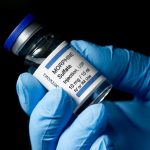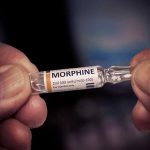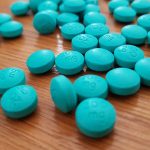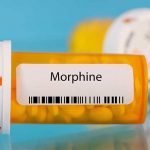- Where To Get Naloxone
- How Much Does Naloxone Cost?
- What To Do If Someone Overdoses On Morphine
- What To Expect When You Use Naloxone
- Treating A Morphine Overdose
The antidote for a morphine overdose is naloxone, an opioid antagonist. Naloxone binds to opioid receptors and blocks the effects of opioids like morphine. It can also reverse the effects of morphine, which gives you time to seek medical help if someone overdoses.
If you overdose on morphine, you won’t be able to administer naloxone on yourself. It can only help you if someone else is there to give it to you.
Naloxone has saved many lives, but it’s a temporary solution. When dealing with a morphine overdose, always get medical healthcare as soon as possible.
Where To Get Naloxone
Naloxone is available at most major pharmacy chains—including CVS and Walgreens—across the United States. Because opioid overdose deaths have spiked in recent years, naloxone is available without a prescription (and no questions asked).
You can get naloxone as a nasal spray (Narcan) or an injection. The pharmacist should show you how to use naloxone so you’re prepared to administer it.
Some pharmacies require a prescription for naloxone. You may be eligible for a naloxone prescription if:
- you’re prescribed high doses of morphine for chronic pain
- you’re in medication-assisted treatment (MAT) for opioid drug abuse (with methadone or buprenorphine)
- you’ve recently had medical care for opiate poisoning
- you’ve had a period of abstinence from opioid use
How Much Does Naloxone Cost?
How much naloxone costs depends on whether or not you have insurance.
The average cost without insurance is:
- $45 for a multi-step injection
- $85 for a multi-step nasal spray
- $150 for a single-step nasal spray (Narcan)
Most insurance companies cover naloxone, though you may have a co-pay. Some states, like New York, offer naloxone coverage assistance programs that decrease your co-pay.
If you don’t have insurance, discount programs like GoodRx can usually get you at least 50 percent off. Some states have opioid overdose prevention programs that provide naloxone for free.
Morphine Overdose Signs
A morphine overdose can be deadly. As a central nervous system (CNS) depressant, morphine can cause your vital functions like heart rate and breathing to slow down too much. Knowing opioid overdose symptoms may help you save someone’s life.
Before administering naloxone, look for signs of morphine overdosage, such as:
- slow, irregular, or stopped breathing
- blue skin and nails (from lack of oxygen)
- cold, clammy skin
- slow heart rate
- pinpoint pupils
- nausea and vomiting
- heavy sedation
- drowsiness
- seizures
- coma
If you see these signs, act quickly. A lack of oxygen to the brain can cause permanent damage in less than five minutes, even if you save the person’s life.
The Centers for Disease Control and Prevention (CDC) notes that naloxone shouldn’t have an adverse reaction on someone who has overdosed on non-opioid drugs like benzodiazepines. It’s best to give it even if you’re not positive it’s an opioid overdose.
What To Do If Someone Overdoses On Morphine
If you think someone has overdosed on morphine, check to see if they are responsive or not. Then call 911 immediately. Be clear in describing the situation and your location.
Give naloxone while you’re waiting for medical assistance. If the person is unresponsive after two to three minutes, you may need to give them another dose. (Narcan comes in a two-pack.) Zimhi—a naloxone injection approved in 2021—comes in higher doses, so only one dose may be necessary.
If the person has shallow breath or isn’t breathing, check that nothing is blocking their airway. If it’s clear, perform CPR.
The American Heart Association (AHA) recommends only doing chest compressions if you’re not trained in CPR. The emergency operator should be able to talk you through the process.
Stay with the person who has overdosed until help arrives. Most states have Good Samaritan laws that protect you if you’re helping to save someone’s life.
What To Expect When You Use Naloxone
Whether you use naloxone as a nasal spray or injection, it should work in three to five minutes and wear off after 30 to 90 minutes.
Side effects of morphine reversal may include morphine withdrawal symptoms, such as:
- dizziness
- weakness
- body aches
- fever or chills
- goosebumps
- nervousness
- restlessness
- irritability
Morphine withdrawal can be dangerous if the symptoms are severe. As you wait for emergency assistance, you can ensure the person’s safety and relative comfort.
Since a second naloxone dose may be needed, keep an eye on the person to make sure they don’t go back into overdose.
You should also look out for life-threatening complications, such as hallucinations, seizures, or a heart attack. You may not be able to help with these things, but you can alert the medical team as soon as they arrive.
Treating A Morphine Overdose
If you’ve overdosed on morphine, healthcare professionals will check your vital signs, such as heart rate and blood pressure. At the hospital, they may do tests on your heart and brain.
Treatment options for a morphine overdose will depend on the level of toxicity and may include:
- oxygen or intubation (a tube to help you breathe)
- intravenous (IV) fluids
- laxatives
- stomach pumping (gastric lavage)
- activated charcoal to absorb toxins
- medicines to reduce discomfort
If you’re concerned that you or a loved one may overdose on morphine because they’re misusing the drug, we can help. To learn more about morphine overdose and opioid addiction, reach out to a Northeast Addictions Treatment Center specialist today.
Sources
Written by
Northeast Addition Editorial Team
©2024 Northeast Addition Center | All Rights Reserved
This page does not provide medical advice.







